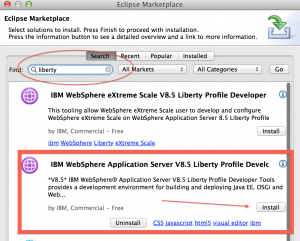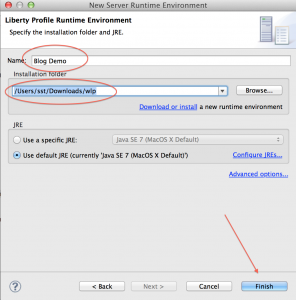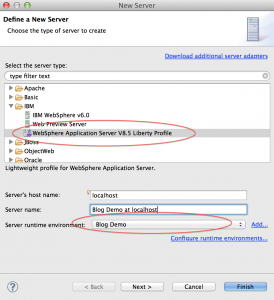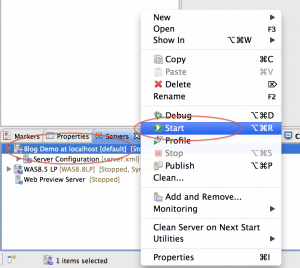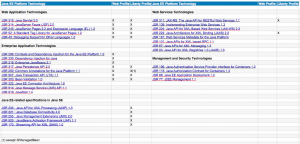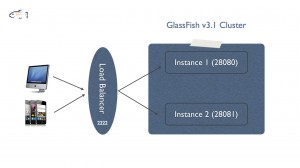Posts Tagged javaee
Java EE Containers and Docker
Posted by Sébastien Stormacq in IBM, Java, Oracle on 04/08/2014
Docker is an open platform for developers and sysadmins to build, ship, and run distributed applications. Given my long history with Java EE, it was natural for me to experiment the installation and deployment of popular Java EE containers using Docker.
Communities and Software vendors did not wait for me, and I discovered many prebuilt containers, ready to use.
The list below references official builds, i.e. the ones created and maintained by the software vendor. (by alphabetical list)
- Oracle – GlassFish 4.0.1 (thanks Alexis)
- IBM – WebSphere Liberty Profile
- JBoss – Wildfly
- Oracle – WebLogic 12c
I also built my own Dockerfile for Glassfish.
Feel free to comment this post, I will update the list. (Official builds only)
Enjoy !
How to install WebSphere 8.5 Liberty profile on Mac
Posted by Sébastien Stormacq in IBM, Java, Mac OS X on 09/09/2012
WebSphere 8.5 Liberty Profile is a small, fast, agile WebSphere runtime that you – developers – can use to develop, test or embed in your applications. The runtime is provided free of charge from IBM. Like every Java EE Profile, it implements a subset of the Java EE Specification, while ensuring 100% “upwards” fidelity to the full WebSphere Application Server.
On my i7 – quad core – machine, WAS Liberty starts in less than 1 sec. With not application deployed.
Installing the runtime is as easy as unzipping a file on your drive, here are the steps
- download from wasdev.net (46 Mb only)
- unzip
java -jar wlp-developers-8.5.0.0.jar
After displaying and approving the distribution license, you will be ready for the next step
- Optional : create a server instance (an instance “defaultServer” is created for you automatically, this step is optional)
# cd wlp # chmod u+x bin/server # ./bin/server create MyInstance Server MyInstance created.
- start it
# ./bin/server start MyInstance
Or just this line to start the default instance
#./bin/server start
Server MyInstance started with process ID 59946.
Now that you have the runtime, you are ready to install the tooling to manipulate it from Eclipse.
- Start Eclipse (Indigo or Juno)
- Open Eclipse MarketPlace
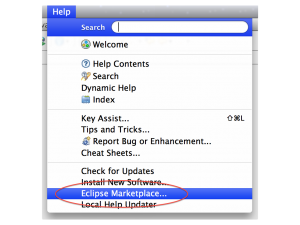
- Search for “liberty” and click on “Install”
- In the “Eclipse” menu, click on “Preferences”
- In the “Preferences” pane, select “Server”, then “Runtime Environment” and click on “Add”
- Select “WebSphere Application 8.5 Liberty Profile”
- Give the name you want, point to your Installation directory (see bullet 2 in the installation instructions above) and click “Finish”
- Switch to the “Server” window in the “Java EE” perspective
- Right-click – New -> Server, choose your newly created runtime instance
- Don’t leave the “Server” window, right click on the server name and choose “Start”
The “Console” window should automatically open, and within a few seconds, you should see the following line to appear :
Launching default (wlp-1.0.0.20120428-1251/websphere-kernel_1.0.0) on Java HotSpot(TM) 64-Bit Server VM, version 1.7.0_07-b10 (en_US) [AUDIT ] CWWKE0001I: The server default has been launched. [AUDIT ] CWWKZ0058I: Monitoring dropins for applications. [AUDIT ] CWWKF0011I: The server default is ready to run a smarter planet.
You have now a fully functional WebSphere Liberty profile installed and the corresponding tooling in Eclipse. The tooling allows you to stop/start the application server, but also to manage its configuration and, obviously, to deploy applications on it.
In the next blog entry, I will show you how to deploy a REST based web service on Liberty
Enjoy !
WebSphere Application Server – Liberty Profile
Posted by Sébastien Stormacq in IBM, Java on 08/06/2012
When talking to developers about WebSphere Application Server Liberty Profile (the new lightweight, ultra fast and developer friendly profile for WAS), I always receive questions about supported JSRs and comparison with Java EE 6’s Web Profile.
Therefore I collected information from documentation, blogs, internal IBM forums etc … to create the following list.
(click to enlarge 🙂 )
This is *not* an official IBM document, just a compilation I gathered from various sources. Please feel free to point me any missing or incorrect entries.
[UPDATE]
The official list of API supported in Liberty profile is now published in WAS 8.5 product documentation.
[/UPDATE]
Enjoy !
GlassFish v3.1 High Availability screencast
Posted by Sébastien Stormacq in Java on 29/11/2010
A couple of weeks ago, during Devoxx 2010 conference, I was answering questions and demonstrating several new and upcoming products, amongst others : GlassFish v3.1
I created a very simple session fail over demonstration, involving two instances of GlassFish and a simple, open source, software load balancer.
The screen cast is available on YouTube in HD quality and from this post.
My colleague, Arun Gupta, from GlassFish engineering, also posted a similar screencast a couple of days ago. The more, the better.
Software mentioned in this screencast :
- GlassFish v3.1 nightly build
- NetBeans 6.9
- Balance, an open source load balancer
The source code for the demo application is available as a NetBeans project.
Enjoy !
GlassFish Open Source Edition 3.0.1 is released
Posted by Sébastien Stormacq in Java on 15/06/2010
The GlassFish community announced today the immediate availability of GlassFish Open Source Edition 3.0.1
Quoted from GlassFish web site : “GlassFish 3.0.1 is built on a modular, flexible runtime based on the OSGi standard. It enables organizations to create and deploy Web applications with the lightweight Java EE 6 Web Profile and to easily leverage the power of the full Java EE 6 platform for enterprise applications. Developers also benefit from the simplified programming model and productivity improvements offered by Java EE 6. The result is a flexible platform that can apply only what is needed to address the business problem, thereby reducing cost and complexity”
GlassFish is released under a dual CDDL and GPL v2 license.
GlassFish Open Source Edition is supported by the community (mailing lists, forum and documentation wiki). Oracle is expected to release in the next few days an equivalent commercial version, GlassFish Enterprise Server 3.0.1.
If you are curious to know were the GlassFish community is going and what is brewing for next releases, be sure to read the roadmap.
Java EE 6 online code camp is starting today
Posted by Sébastien Stormacq in Java on 11/01/2010
The first online Java EE 6 code camp is starting today, it is not too late to register.
The objectives of this code camp is to let you practice and code, code, code using key Java EE 6 technologies.
Online mentors (top notches guys from the Java community) will be available online to answer your questions.
One more thing : this is entirely free, so do not hesitate and register today.
GlassFish Tools for Eclipse are available
Posted by Sébastien Stormacq in Java on 24/03/2009
Sun is making available GlassFish Tools for Eclipse (v0.9, final version to be release soon). This is a pre-configured package containing Eclipse 3.4.1 alongside with GlassFish v2.1 and GlassFish v3 prelude and the required Eclipse plugins to effectively manage and deploy applications to GlassFish right from the IDE.
Q: Who is the target for this offering?
A: Developers or organizations that have already standardized on or prefer Eclipse over NetBeans.
Q: Why has Sun created this offering?
A: Sun has created a strong preference for GlassFish among NetBeans users. However, a large community of developers have chosen Eclipse as their IDE of choice. Today those developers have to download open source products from multiple locations and configure them to work together (error prone), increasing the barrier to entry. This offering creates a positive feature-rich out-of-the-box experience for Eclipse developers. In additional, developers can now leverage the open source plugins created by competitive frameworks (Spring, SEAM, Hibernate, etc) within a GlassFish-focused IDE. This bundle will also improve the relationship between the community of Eclipse developers and Sun.
Q: Is Sun moving away from Netbeans towards Eclipse?
A: No. Sun is expanding its reach by embracing not just the NetBeans developer community, but also the Eclipse community. This is a consistent with Sun’s strategy of using open source to "lower the barrier to entry" – in this case to a large developer community.
